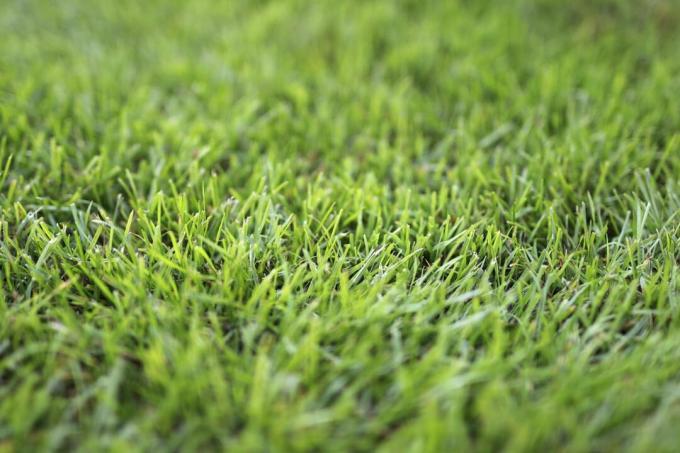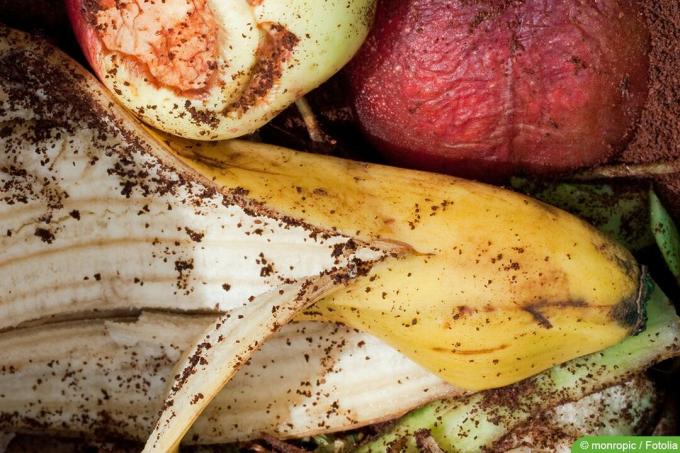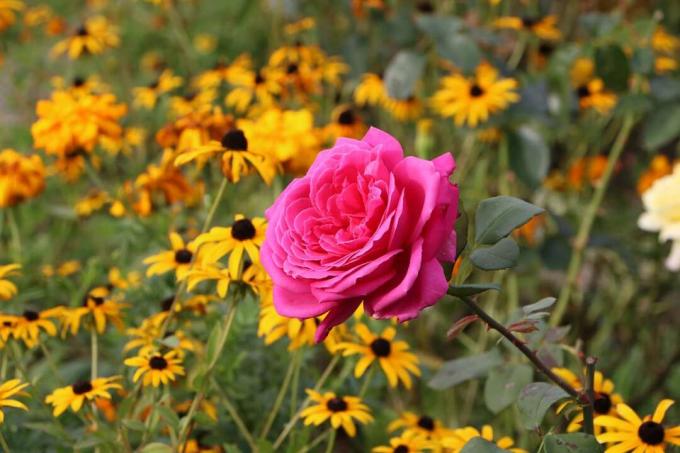

Table of contents
- Components and production of potassium fertilizer
- Apply potassium fertilizer
- Effect of potassium fertilizer
- Cause of potassium fertilization
- Effects of Potassium Fertilization
- Worth knowing about potassium fertilizer shortly
Potassium fertilizer and the effects Potassium is needed by plants for the most part during the development of new leaves, i.e. after the hibernation in the growth phase. The element potassium is important for resistant and healthy cell tissue in plants. It also helps the plant to become more resistant to cold and drought. Young plants usually have more potassium in them than older plants.
Especially useful plants in the garden, such as potatoes, have a high potassium requirement, which can usually only be covered by fertilizing. If you want to bring in high yields, you should ensure that your plants have an adequate supply of potassium. Potassium is essential for the development of fruit. And of course also for protection against diseases, frost and heat.
Fertilizing with potassium fertilizer is necessary because the naturally occurring potassium silicates in the soil are difficult for the plants to absorb. This is similar to the phosphates. Potassium is needed for plants to absorb enough water. Since water is of essential importance for plants, potassium is one of the main nutrients of plants, as it is for other living beings. A potassium deficiency makes plants susceptible to Diseases. They look limp and the leaves are yellowing. However, these symptoms only appear after normal growth and normal development and coloring of the leaves.
After that, yellowing usually occurs first on the lower leaves. It doesn't matter whether the leaves are young or old. All can be affected. To remedy the potassium deficiency, with potassium fertilizer foliar fertilization can also be carried out. The underside of the leaves is treated with the fertilizer in liquid form. When using potassium fertilizer, it is best stored in humus rich soil. In sandy and calcareous soils, there is often a lack of potassium. Here the supply of potassium fertilizer is to be carried out more often. Potassium deficiency is often associated with calcium deficiency. Calcium deficiency is usually not detectable as a deficiency itself.
Components and production of potassium fertilizer
This type of fertilizer can be made in two ways. A first possibility arises from the degradation of kainite. A second possibility arises from industrial production. Potassium sulphate and also potash magnesia are formed in the process. The effect of the fertilizer is primarily produced by its composition. The single nutrient fertilizer consists of kainite and its salts. However, it always contains 30 to 50 percent potassium. Potassium sulfate, on the other hand, is contained in so-called multi-nutrient fertilizers. This in turn contains potassium and sulfur. Furthermore, Kalimagnesia is an integral part of this fertilizer. It contains potassium, sulfur and magnesium.
Apply potassium fertilizer
Potassium fertilizer is very professional to use. To do this, the soil should have been analyzed beforehand. Many garden soils are already so heavily fertilized that they have an abundance of potassium. However, an excessive supply should be avoided as far as possible. As a rule, the Potassium Denger is used as an autumn fertilizer. If it is to be used for a lawn, it should definitely be dosed high. Autumn is therefore recommended as a fertilizer time, as it also increases the winter hardiness of lawn grasses. In particular, if the garden consists of perennials and shrubs, appropriate care should be taken. Another advantage of fertilizing with potassium is the higher tolerance of plants in times of drought.
Potassium is very special due to its high storage capacity. Even when it rains, potassium is only washed off very easily and thus remains in the soil for a very long time. Appropriate care can therefore be expected for one to two years. Wood ash is also recommended as an alternative because it contains a particularly large amount of potassium. Unfortunately that is Fertilize with wood ash very problematic. Since it contains a lot of lime and also a high proportion of heavy metals, it is often very difficult to use.
Effect of potassium fertilizer
Potassium is a substance that plants need, especially when developing leaves. The right time for this is the period after the hibernation for growth. Potassium causes the cell walls of the plants to be able to resist more and is also very healthy. This greatly strengthens the cell tissue. This resilience is then also reflected in the area of defense against cold and dry times. Very young plants usually have even more potassium than old plants.
A distinction must also be made between the plants that are to be treated with the potassium fertilizer. This includes potatoes, for example, which need a lot of potassium. In general, this high demand can be related to crops in particular. Only through appropriate fertilization can gardeners adequately cover this need. Anyone who grows commercial crops in particular should therefore not do without potassium fertilizer. The necessary level should therefore be observed at all costs. This is specifically for the development of fruit. At the same time there is protection against pests, diseases and frost.
Cause of potassium fertilization
The necessity of fertilizing with potassium fertilizers results in particular from the poor absorption capacity of potassium silicates. Nevertheless, it is absolutely necessary for the plants to absorb water. Potassium is therefore also one of the main nutrients in plants and is therefore indispensable. Experts speak of an essential nutrient. These circumstances also have consequences for a lack of the element potassium. Thus, a plant suffering from a potassium deficiency is also much more susceptible to disease. The plants quickly let their leaves droop and even yellowing occurs. These changes are particularly evident when the leaves are already fully developed and the classic color of the leaves has also set in.
Decay begins at the lower edges of the leaves. The yellowing runs from bottom to top. This can affect both young shoots and mature leaves. The infestation can affect all leaves and the potassium fertilizer also offers help here. Because in such cases there is a need for foliar fertilization. For this, the potassium fertilizer is needed in liquid form. The leaves are rubbed accordingly from the underside.

The other use of potassium fertilizer is to store it in the humus-rich soil. Soils made of sand or lime in particular can therefore suffer from a lack of potassium. In such cases, fertilizing is very useful at frequent intervals. The potassium fertilizer should therefore always be in large quantities in stock. In addition, there is often a calcium deficiency at the same time. However, this cannot be determined by the gardener.
Effects of Potassium Fertilization
Potassium fertilizer is primarily used to regulate a plant, more precisely to regulate the potassium balance. The well-being of the plant is brought to the fore and the resistance of the plant is increased. Pests and diseases don't stand a chance. Particular attention should be paid to fruit trees and vegetable patches. They have a very high requirement, as they are supposed to bear fruit in the spring after the winter period. Indoor plants must be exempted from fertilizing with potassium fertilizers. However, the application should only be used on plants in the garden. This is the only way a healthy plant can survive in the garden.
Worth knowing about potassium fertilizer shortly
Potassium as an element is usually sufficiently present in the soil, but in the form of potassium silicates. This means that the plants have difficulties absorbing it, similar to phosphate. Plants need potassium for their general wellbeing and resilience. It allows the plant's cells to absorb more water. A potassium deficiency makes plants susceptible to disease. They look limp and the leaves are yellowing. However, these symptoms only appear after normal growth and normal development and coloring of the leaves.
- Plants usually already have potassium stored, but these resources are depleted with age.
- Young plants have more potassium than older plants.
- Anyone who uses a fertilizer should therefore make sure above all that potassium has the highest proportion.
- If all other nutrients are available in sufficient quantities, a pure potassium fertilizer is recommended.
Especially after hibernation, plants need potassium and phosphate, while nitrogen is hardly used. This is therefore the right time to use a potassium fertilizer.
- Lawns need potassium. Therefore become autumn lawn fertilizer often referred to as potassium fertilizer.
- Crops in particular need a lot of potassium. The requirement can usually only be met by fertilizing.
- In agriculture, fertilizing with special potassium fertilizer is commonplace, especially for potatoes and rapeseed.
- Even in forestry, potassium fertilizers are often used because potassium is needed to build up wood.
- From this one can also draw the conclusion that potassium is also required by fruit trees and shrubs in the home garden.
- Houseplants with woody parts need potassium just as badly for their health.
- Potassium fertilizer is often indispensable, especially for bonsai lovers, so that they can enjoy their plants for years.
Despite everything, every plant needs potassium and you should make sure that you have an adequate supply. The condition of the soil is important for the supply of potassium. Humic soils are well able to absorb potassium, while acidic soils often suffer from a lack of potassium, so fertilizing is usually essential.
 garden editorial
garden editorial I write about everything that interests me in my garden.
Learn more about fertilizing

Make effective nitrogen fertilizers yourself lawn fertilizer
In order to develop optimally, plants need sufficient nutrients. For example, nitrogen, one of the main nutrients, is indispensable. If this is not present in sufficient quantities in the soil, satisfactory growth cannot take place. As a result, it must be delivered.

Dried banana peel as fertilizer | Application tips
Bananas are popular and healthy. The banana peel usually ends up in the trash. But it is far too good for that, because the dried shells are an excellent fertilizer for a variety of garden plants.

Horn meal: with fertilizer against clover in the lawn | 7 tips
In the lawn, clover is usually undesirable. With too little fertilization, however, it spreads quickly. Horn meal can help as a biological fertilizer. See this article for tips on how to use it.

Unusual Fertilizers | 13 home remedies that can do more
Much of what accumulates in the household and usually ends up in the organic waste bin can be used to fertilize garden and/or indoor plants. They offer an ecological alternative to mineral fertilizers and score with environmental compatibility and sustainability.

Fertilizer for roses: 15 home remedies for fertilizing roses
In addition to rose fertilizer, numerous home remedies are also suitable as nutrient suppliers for roses. We present the most popular ones in this article!

Fertilize properly | What good is low-nitrogen fertilizer?
No plant can survive without nutrients. Only with optimal and needs-based care can they develop magnificently, bloom lavishly and bring rich harvests. As a result, fertilizer plays an important role in care, provided the ingredients and dosage are right.

